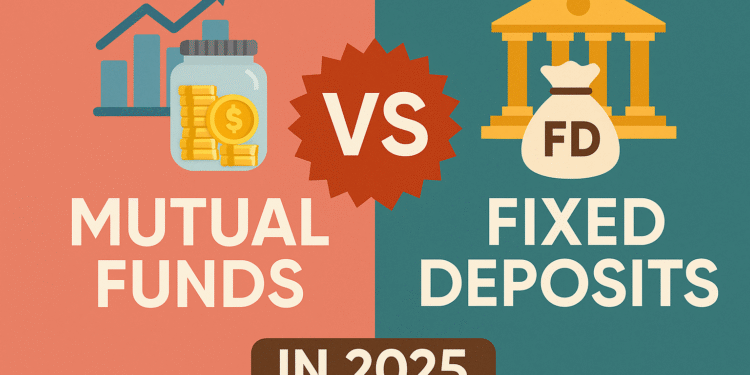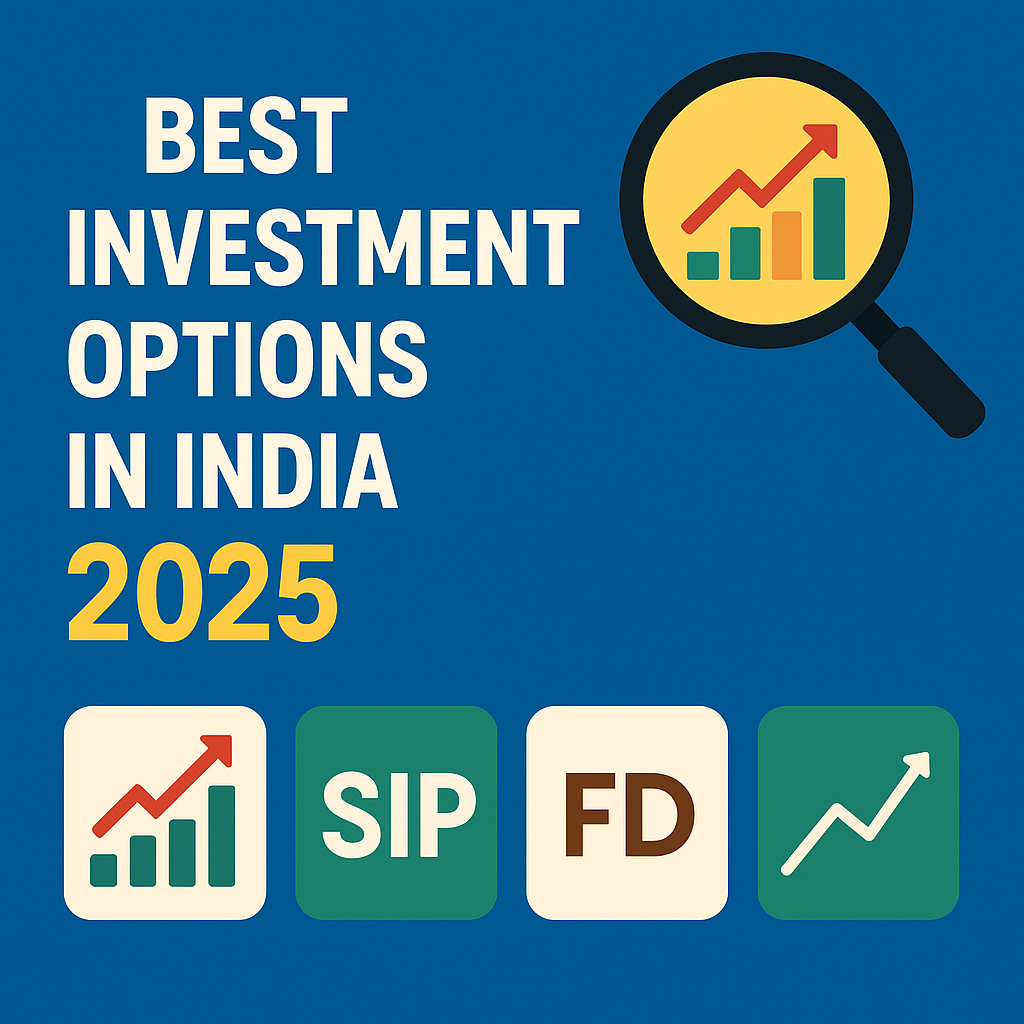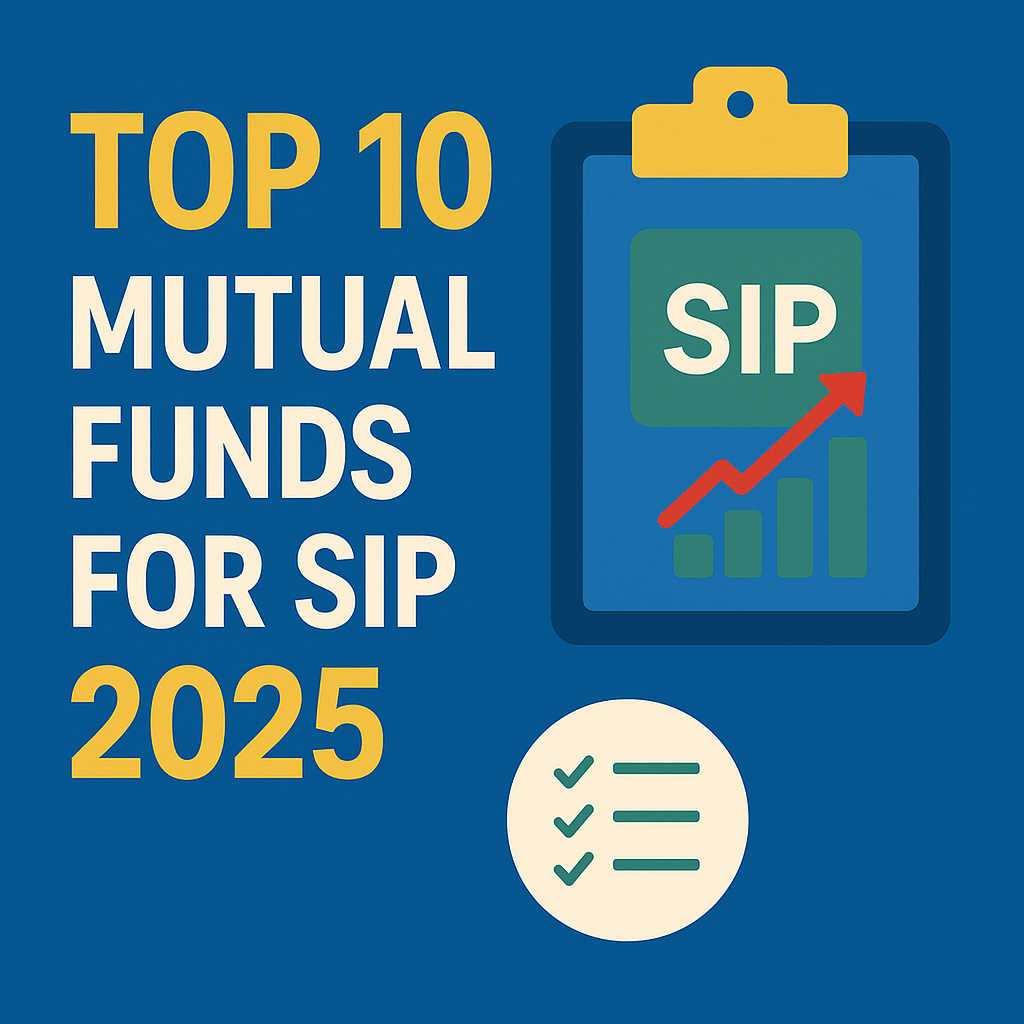2025 puts savers at a familiar crossroads: one path offers steady, predictable returns while the other ties outcomes to market swings and growth potential.
Bank and NBFC rates now sit around 6–7%, making term accounts useful for short-term goals and cautious retirees. Principal protection up to ₹5 lakh per depositor per bank via DICGC adds a clear safety layer.
On the other side, systematic plans and equity schemes aim to outpace inflation over time. They use rupee cost averaging, let you pause or boost contributions, and compound gains—helpful for young professionals targeting long horizons.
Tax rules matter: term interest is taxed per slab with TDS thresholds; ELSS gives an 80C claim but locks money for three years. Since equity gains face updated STCG/LTCG rules from July 2024, holding period affects after-tax returns.
Bottom line: guaranteed returns suit short-term needs; market-linked options offer higher long-term upside. A blend tailored to your goals, horizon, and risk profile often works best.

Key Takeaways
- Term accounts give predictable interest and DICGC cover up to ₹5 lakh per bank.
- Rates near 6–7% in 2025 make them ideal for short-term needs and low risk tolerance.
- SIPs provide rupee cost averaging, flexibility, and compounding for long-term goals.
- ELSS offers 80C tax relief with a 3-year lock; equity gains follow new STCG/LTCG rules.
- Tax treatment and liquidity should guide choice alongside goals and time horizon.
- For many savers, a balanced mix of both approaches matches security with growth.
Why Indians in 2025 are debating FD vs Mutual Funds
Shifting interest rates, stubborn inflation, and longer financial timelines have pushed many households to rethink where they park their cash.
Bank term rates near 6–7% still appeal for short-term needs because they offer clarity and regulatory protection. DICGC cover up to ₹5 lakh per depositor per bank anchors trust for many savers.
At the same time, millions of retail accounts using systematic plans show a growing appetite for disciplined, market-linked growth. Regular contributions help reduce the urge to time the market and use rupee cost averaging.
The trade-off is clear: predictable returns come with limited upside, while market exposure brings higher long-term potential and more volatility. Post-2024 tax tweaks on equity gains also shape choices for taxable investors.
- Practical point: near-term cash and emergency funds often suit bank products; multi-year financial goals usually fit equity-linked routes.
- Household planning: segment by horizon, match products to risk tolerance, and avoid product loyalty driving decisions.
Fixed Deposit basics in 2025: safety first, steady but limited growth
For short horizons and emergency cash, a booked rate that won’t change gives real peace of mind. Fixed deposits deliver guaranteed returns for the full tenure. When you open a deposit the rate is locked, whether at a bank or a corporate lender.
What the ~6–7% band means: these rates make FDs attractive for capital preservation and near-term goals. They suit conservative planners but may trail inflation over long horizons, reducing real income.
Tax and TDS rules: interest is added to your taxable income and taxed at slab rates. Banks deduct TDS at 10% once interest crosses ₹50,000 in a year (₹1,00,000 for senior citizens). If you don’t submit PAN, TDS can rise to 20%.

- Tax-saver option: 5-year tax-saver FDs qualify under Section 80C but have a strict 5-year lock-in and no premature closure.
- DICGC cover: deposit protection is ₹5 lakh per depositor per bank (principal + interest); amounts above that carry concentration risk.
- Liquidity trade-offs: premature withdrawals usually incur penalties and lower realized returns; laddering maturities can smooth reinvestment risk.
- Senior benefits: many banks offer slightly higher rates and a higher TDS threshold for seniors, improving post-tax outcomes.
Bottom line: use FDs as a capital-preservation anchor for emergency funds and short-term goals. Pair them with growth options elsewhere to offset limited long-term returns.
Mutual fund and SIP essentials: higher return potential with market-linked risk
Regular disciplined contributions can turn modest savings into meaningful capital over time. SIPS let you invest fixed amounts at set intervals, which smooths purchase prices and enforces saving habit.
What these pooled vehicles do: a mutual fund pools money from many investors to buy equities, debt, or a mix. Equity schemes aim for low double-digit growth—often cited around 12–15% long term—while debt strategies typically track interest rates near 6–7%.
Key mechanics: a sip buys more units when prices fall and fewer when prices rise, which helps rupee cost averaging. Compounding magnifies outcomes when returns are reinvested and contributions continue without long breaks.
- ELSS are equity-oriented tax-saving options that qualify under Section 80C and carry a 3-year lock-in.
- Most sips start small and let you pause, increase, or stop based on cash flow.
- Costs—expense ratios and exit loads—chip away at long-term growth; check the fund factsheet.
- Choose equity, debt, or hybrid according to horizon and risk, not past performance; diversified or index choices lower concentration risk.
FD vs Mutual Fund Comparison Table (2025): returns, risk, liquidity, taxation

Returns and volatility at a glance
Use this snapshot to match product traits to your timeline and comfort with swings.
| Feature | Fixed deposit | Mutual funds | How to choose |
|---|---|---|---|
| Typical returns | 6–7% fixed at booking | Market-linked; equities aim higher long term | Short horizon → fixed; long horizon → market route |
| Risk | Low market risk; inflation/reinvestment risk | Higher volatility; moderated by allocation and time | Risk appetite and horizon decide allocation |
| Liquidity | Breakable with penalties; some lock-ins (e.g., tax saver) | Redemption typically T+2/T+3; ELSS has 3-year lock-in | Need quick access → pick fixed or short-term debt |
| Taxation | Interest taxed at slab; TDS triggers apply | Equity: STCG 20% (≤12m), LTCG 12.5% over threshold | Compare post-tax, post-inflation returns for real choice |
Best suited for: matching products to goals and timelines
Short-term or emergency: capital-preservation and predictability. Choose fixed deposits or short-term debt.
Medium to long term: growth and inflation-beating potential. Consider market-linked funds via disciplined contributions.
Liquidity and access: penalties, lock-ins, and how quickly you get your money
Access to cash matters: how quickly you can redeem holdings and the penalties you face can change a plan’s outcome. Read the fine print before you book a deposit or start a regular plan.
Premature closure rules for term accounts
Many callable deposits allow early exits but cut the applied rate by around 1%, lowering realized returns. Non-callable variants may not permit early withdrawal at all.
Tax-saver five-year deposits under Section 80C carry a strict five-year lock-in. You cannot break them early, so they are unsuitable for emergency funds.
Redemptions for pooled schemes and ELSS
Open-ended schemes let you redeem partially or fully on request. Equity and hybrid redemptions typically settle in T+2/T+3 days, while some debt options clear faster. Short holding exit loads may apply.
ELSS contributions are locked for three years per installment. That matters when you run a sip — each tranche has its own lock-in clock.
- Pause, stop, or modify a sip instruction without touching already purchased units.
- Some corporate deposits have different early-exit terms; read the issuer terms carefully.
- Use a short-term ladder or an emergency cash buffer so long-term plans continue uninterrupted.
- Consider systematic withdrawal plans (SWPs) from debt schemes for steady cash needs.
“Align liquidity to your timeline: predictable maturity dates suit known goals; on-demand redemptions help with uncertain needs.”
Risk in the real world: capital safety vs market swings
Real-world portfolios face two clear pressures: preserving capital and surviving market swings. This section looks at when guaranteed products can still disappoint and how to manage volatility in pooled schemes.
When stability can still disappoint
Guaranteed accounts excel at short-term preservation, but inflation can erode real gains over longer horizons. DICGC covers ₹5 lakh per depositor per bank, so balances above that create concentration risk.
Breaking a term early usually triggers penalties that cut realized returns. That penalty can turn a planned gain into a loss after tax and inflation.
Managing volatility with allocation and horizon
For market-linked choices, a clear asset mix—equity, debt, and hybrid—calibrates volatility to your tolerance and time horizon. Diversify across styles and caps to lower idiosyncratic exposure.
- Rebalance periodically to lock gains and restore targets.
- Use disciplined contributions to reduce behavior risk during drawdowns.
- Match product risk to the goal: choose safety for near-term needs and growth for distant plans.
“No product is risk-free; even ‘secure’ holdings face inflation and reinvestment risks.”

Taxation in 2025: how FDs, equity funds, and debt funds are taxed
Tax rules in 2025 shape how much of your yield actually reaches your pocket. Readability of post-tax outcomes matters when you compare options. Below are practical points to help investors plan.
FD interest as income: slab rate impact and TDS triggers
Interest on bank term accounts is treated as income from other sources and taxed at your slab rate. Banks deduct TDS at 10% once annual interest crosses ₹50,000 (₹1,00,000 for seniors).
If you don’t submit PAN, TDS can be charged at 20%, which affects cash flow even if final tax is lower when filing.
Equity-oriented funds: updated STCG and LTCG rules and thresholds
Short-term capital gains on equity schemes held ≤12 months are taxed at a flat 20%. Long-term gains for >12 months carry 12.5% tax on gains above ₹1.25 lakh per financial year (post-July 2024).
ELSS continues to offer Section 80C relief with a mandatory 3-year lock-in per tranche. Track each SIP date—every installment has its own holding clock for tax purposes.
Debt funds and holding periods: what investors should expect
Tax on debt offerings depends on classification and holding period. Short holds attract regular tax; longer holds may get favorable long-term treatment linked to indexation rules. Expense ratios and exit loads are not taxes but lower net returns, so include them in calculations.
- Maintain statements, capital gains reports, and TDS certificates for accurate filing.
- Consider tax-loss harvesting where applicable and consult a tax professional for complex situations.
“Taxes reduce take-home returns; factor them into comparisons before choosing a product.”
Who should choose FD in 2025
If you need certainty and steady payouts, a term account often fits that brief. These products deliver a known maturity amount and predictable interest, which matters when planning cash flows.
Retirees benefit most: non‑cumulative interest options can produce regular income while protecting principal. Many seniors also access slightly higher rates and a higher TDS threshold, improving net receipts.
Risk-averse savers who prefer low volatility should consider these instruments as a core holding. Short-term savers with defined timelines under three years gain from assured values at maturity.

- Use laddering to smooth reinvestment and reduce rate risk.
- Keep an emergency buffer via callable accounts with modest penalties.
- Avoid concentration above the DICGC ₹5 lakh cover; spread amounts across banks.
- Choose the 5‑year tax‑saver if you need an 80C claim and accept the lock‑in.
Tip: Always compare post‑tax, post‑inflation returns to set realistic goals for your money.
Who should choose mutual funds in 2025
For long horizons, disciplined regular contributions can turn small savings into sizable wealth.
Young professionals who can leave money invested for years benefit most. Regular sips create compounding and help riders ignore short-term market noise.
Long-term wealth creators seeking growth to outpace inflation should favour equity exposure matched to tolerance. Diversified options cut concentration risk and lower volatility over time.
Goal-based plans — retirement, children’s education, or big milestones — fit neatly with systematic approaches that let you pause, increase, or stop contributions as life changes.
- Use ELSS for tax-efficient equity exposure with a three-year lock-in under Section 80C.
- Conservative starters can pick hybrid or large-cap index choices as stepping stones.
- Raise contribution amounts as income grows to speed corpus building.
- Keep an emergency buffer outside market-linked holdings to avoid forced redemptions.
“Patience and steady contributions through cycles usually beat frequent switching.”
| Investor profile | Why this suits them | Suggested route |
|---|---|---|
| Young saver | Time amplifies compounding | Equity SIPs, diversified funds |
| Tax-conscious | Needs 80C relief | ELSS with 3-year lock-in |
| Conservative | Wants lower volatility | Hybrid or large-cap index |
mutual funds vs fixed deposits FD vs SIP safe investment India best investment
Start by naming each goal, its deadline, and the minimum after-tax return you need. That simple step turns abstract choices into measurable planning.
Short-term goals—emergency cash or a planned purchase—usually favour a guaranteed route because predictability matters. For medium to long-term goals, growth vehicles help chase inflation-beating returns.
Balancing inflation-beating growth with capital safety
Think of a core-satellite portfolio. Anchor the core with predictable instruments insured up to ₹5 lakh per bank to protect principal.
Then add a satellite allocation to equity-oriented schemes for potential higher returns. Use disciplined contributions to build this satellite and let compounding work over time.

- Map each financial goals to a timeline, then pick the right investment option for that horizon.
- Be honest about risk tolerance; size your equity exposure accordingly, not emotionally.
- Use SIPs for steady accumulation and an FD ladder for planned withdrawals and income needs.
- Factor tax (ELSS/80C, FD TDS) into net returns — post-tax, post-inflation results are the true score.
“Balance is dynamic: review allocations regularly and rebalance when drift or life changes occur.”
Portfolio playbook: blending FDs and SIPs for resilient, goal-based investing
Designing a resilient plan means blending steady holdings with selective market exposure. Use a clear core-satellite approach so each goal has a role and a rule.
Core-satellite approach
Core: hold fds and high-quality debt to protect principal and provide predictable cash flow.
Satellite: deploy equity-oriented funds for growth, sized to your horizon and risk appetite.
Laddering and staged contributions
Ladder fds with staggered maturities to create periodic liquidity and reinvestment points when rates move up.
Start a sip at a base amount and schedule step-ups with salary rises. Treat sips as long-term engines for compounding value.
Rebalancing and using dips
Rebalance annually or when allocations drift beyond set thresholds. Sell winners, top up laggards to keep risk aligned.
Buy the dip: add to sips during corrections instead of pausing; volatility helps lower average costs over time.
“Document rules and follow them—an IPS reduces emotional trading and preserves returns.”
Conclusion
The final decision depends on what you want your money to do now and later.
Term accounts backed by DICGC offer capital protection and predictable returns near 6–7% for short horizons. Market-linked choices provide potential for long-term growth but bring volatility, tax rules (including updated capital gains) and fees that change net outcomes.
Align every rupee with a clear goal, timeline, and risk boundary. Use laddering for predictable cash needs and regular plans with rupee cost averaging for growth. Rebalance periodically and factor taxes, costs, and inflation when measuring success.
Final verdict: safety for short-term goals; growth for long-term goals. A balanced, goal-driven plan builds durable wealth. See the FAQs below for quick answers on safety, returns, 2025 tax rules, and the right option for your needs, and consider professional advice for personalized allocation.
FAQ
What are the main differences between FDs and mutual funds for a 2025 investor?
Bank and corporate term deposits provide predictable interest and capital preservation, with insurance on certain bank deposits up to ₹5 lakh. Market-linked schemes offer higher long-term growth potential but carry price volatility. Choose deposits for short-term safety and market funds for longer horizons and higher return expectations.
How does interest on term deposits compare to returns from equity-oriented schemes today?
Typical deposits yield roughly 6–7% annually in current conditions. Equity-oriented options have historically delivered higher average returns—often cited in the 12–15% range over long periods—but those figures vary year to year and are not guaranteed.
Are bank deposits insured and what does that insurance cover?
Deposits in scheduled commercial banks are covered by the Deposit Insurance and Credit Guarantee Corporation (DICGC) up to ₹5 lakh per depositor per bank. This protection covers principal and accrued interest; it does not apply to corporate term deposits or market-linked products.
How is interest from a deposit taxed and what about tax-saving deposits?
Interest on standard term deposits is taxed as the investor’s regular income at slab rates and can be subject to TDS if it exceeds the threshold. Tax-saving term deposits qualify for Section 80C deductions but carry a mandatory lock-in, typically five years.
What are SIPs and how do they help reduce timing risk?
A systematic investment plan (SIP) invests a fixed amount at regular intervals into a chosen scheme. It uses rupee cost averaging to smooth purchase prices over time and benefits from compounding, making it useful for disciplined long-term investing.
Can I get tax benefits from equity-linked savings schemes (ELSS)?
Yes. ELSS investments qualify for Section 80C deductions up to the prescribed limit and carry a three-year lock-in. They offer equity exposure with a tax benefit, but returns and capital are subject to market risk.
How liquid are deposits compared with market schemes?
Deposits generally have fixed tenure; premature withdrawal usually incurs penalties and interest loss. Tax-saving deposits have mandatory lock-ins. Market schemes allow redemptions typically within a few business days, though exit loads and tax implications can apply.
What risks should I watch with deposits despite their perceived safety?
Main risks include inflation eroding real returns and rising tax drag. If interest lags inflation, purchasing power declines. Corporate term deposits also carry credit risk if the issuer faces financial stress.
How can investors manage volatility in market-linked schemes?
Use asset allocation, diversify across equity and debt, invest for appropriate time horizons, and use SIPs to spread entry points. Rebalancing periodically helps lock gains and control drift from target allocations.
How are gains from equity-oriented schemes taxed in 2025?
Short-term capital gains on equity-oriented holdings sold within a year are taxed per updated STCG rules; long-term gains beyond one year may enjoy favorable LTCG treatment up to specified thresholds, with rates and exemptions set by current law.
What about taxation for debt-oriented schemes?
Tax treatment depends on holding period. Short-term gains are added to taxable income and taxed at slab rates. Long-term gains may receive indexation benefits, which can improve post-tax returns. Check the latest thresholds and rules before investing.
Who should prefer deposits in 2025?
Conservative savers, retirees relying on predictable income, and investors with short goals under three years should favor deposits for capital preservation and steady income, provided they accept lower real returns versus inflation-beating options.
Who is better suited to choose market-linked options in 2025?
Investors with multi-year horizons, higher risk tolerance, and goals like wealth creation or beating inflation should consider market-linked schemes. Those comfortable with periodic volatility can capture higher potential returns over the long term.
How do I balance deposits and market funds in a single portfolio?
Use a core-satellite approach: hold stable deposits for emergency funds and short-term needs (core), and allocate a satellite portion to market-linked schemes via SIPs for long-term growth. Ladder deposits and stage SIP amounts to manage cash flow and compounding.
How often should I rebalance between deposits and market allocations?
Rebalance at predefined intervals—annually or semi-annually—or when allocations drift beyond set tolerance bands (for example, ±5–10%). Rebalancing captures gains, reduces concentrated risk, and realigns the portfolio with goals.
What practical steps can I take during market dips?
Increase SIP amounts if your risk profile allows, use lump-sum allocations gradually, or deploy cash reserves selectively. Maintain an emergency deposit buffer so you won’t need forced selling during downturns.
Where can I find reliable performance data and product details?
Use official sources such as Reserve Bank of India updates, Securities and Exchange Board of India (SEBI) circulars, NAV pages on Asset Management Company websites, and bank disclosures. Verify past performance, expense ratios, and taxation summaries before deciding.







![AI Tools for Social Media Creators: Instagram, TikTok & LinkedIn [2025]](https://niftynautanki.com/wp-content/uploads/2025/09/AI-009-120x86.png)

Comments 1